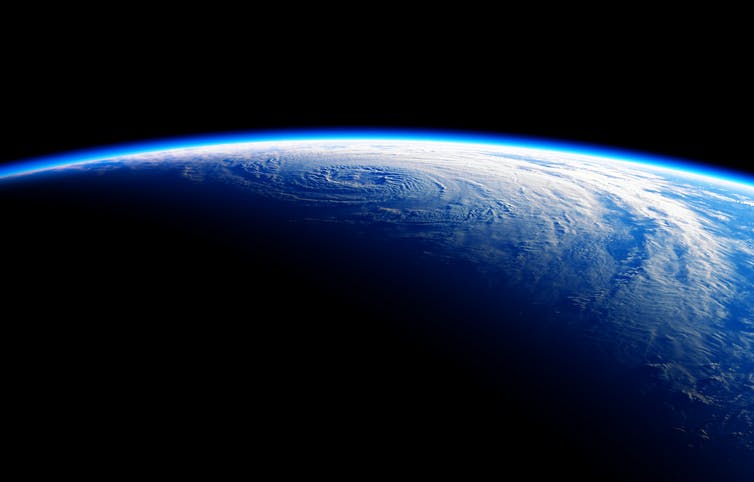Lucy Carpenter, Professor of Atmospheric Chemistry, University of York; , 12 Jun 2019, 3:49 AM UTC
Curious Kids: does the sky protect the Earth and if yes, then how?
Image: theconversation. Source: Licensed as Creative Commons - attribution, no derivatives.
Does the sky protect the Earth and if yes, then how? - Saskia, aged eight, Estonia.
Thanks for the question, Saskia. The "sky" actually means everything above the Earth's surface, including space. That's why so many stars - like our own sun, but much further away - light up the night sky.
But in between our planet's surface and outer space, there's the atmosphere. The atmosphere is made up of gases, which do most of the hard work protecting the Earth as it goes around the sun.
Curious Kids is a series by The Conversation , which gives children the chance to have their questions about the world answered by experts. All questions are welcome: you or an adult can send them to curiouskids@theconversation.com - along with your name, age and place where you live. We won't be able to answer every question, but we'll do our best.
Gases in the atmosphere like carbon dioxide, methane and water vapour trap some of the heat from the sun's rays, which would otherwise go back out into space.
This keeps the Earth at a comfortable temperature, and prevents it getting too cold - like a giant greenhouse.
The Earth has always had these " greenhouse gases " in its atmosphere, but humans keep adding more and more, so the planet is warming up quicker than it would naturally. This has a big impact on life all over Earth, from the seas to the mountains.
Read more: Curious Kids: how is global warming heating up the Earth?
As well as greenhouse gases, the atmosphere also contains oxygen as a gas, which animal life needs to survive. Plants play a big role here, because they do photosynthesis - a natural process that helps them make food. During this process, they take in carbon dioxide from the air and let oxygen back out.
From ten to 50 kilometres above the Earth's surface, you'll find lots of a gas called "ozone". Scientists call this the " ozone layer ", and it's the Earth's natural sunscreen.
The sun's rays feel nice and warm, and in small doses they're very good for us. But they also contain harmful ultraviolet (or UV) radiation, which is what gives you sunburn.
UV radiation can damage your skin, and even cause skin cancer - that's why it's so important to wear sunscreen when you're outdoors.
The ozone layer protects us by absorbing a lot of the UV radiation from the sun's rays, before they even reach Earth's surface. But in the past, humans damaged the ozone layer by releasing chemicals which ate up some of this ozone, causing an "ozone hole".
Countries around the world agreed to stop releasing these chemicals about 40 years ago, and the hole in the ozone layer is now starting to close - though it probably won't heal fully until 2050.
The atmosphere is also where weather happens - clouds, rain, lightning and storms all form in the atmosphere.
Without the atmosphere, rain would not reach many parts of the land, where plants and animals need it to survive, and farmers need it to grow food.
The Earth's atmosphere also shields us from space rocks called meteoroids . Without the atmosphere, meteoroids would crash into the ground every day - and you can imagine how dangerous that would be.
But when a meteoroid starts falling towards Earth from outer space, it travels very quickly through the gases in the atmosphere, and this causes it to get very, very hot and shine brightly.
Most meteoroids burn up before they reach the surface. Those that don't eventually hit the ground: these are called " meteorites " and they can tell us a lot about what's in outer space.
More Curious Kids articles, written by academic experts: